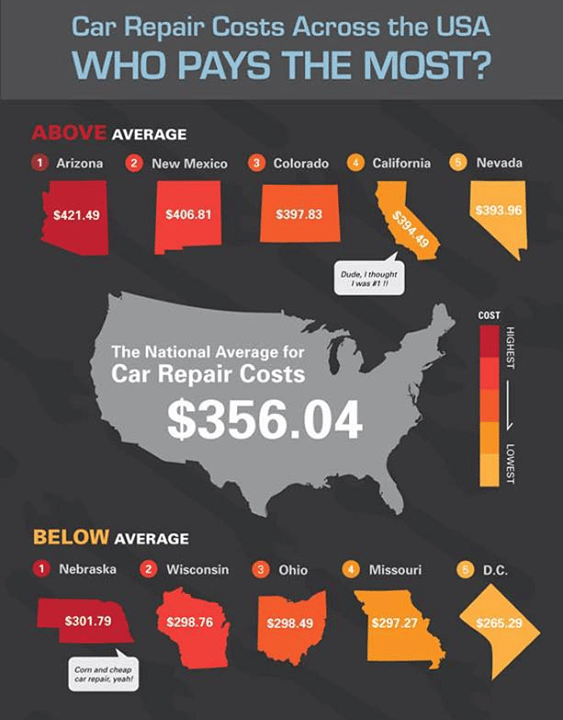However What's The Repair For Squishy Brake Pedals? Reveal The Solution Listed Below!
However What's The Repair For Squishy Brake Pedals? Reveal The Solution Listed Below!
Blog Article
Material Writer-Jansen Bjerring
When it concerns your automobile's brake system, comprehending common issues can save you from potential safety and security threats. From identifying brake pad wear to dealing with brake liquid leaks, knowing how to deal with these troubles is crucial. Yet what concerning those squishy brake pedals? There's a repair for that too. Remain tuned to read more about these problems and the useful remedies that can maintain you securely on the road.
Brake Pad Put On and Replacement
When it pertains to keeping your automobile's brake system, one essential aspect to watch on is the wear and substitute of brake pads. Brake pads are vital parts that press against the brake blades to reduce or quit your automobile. With time, these pads wear down as a result of friction, calling for regular evaluation and substitute to guarantee your brakes operate successfully.
To figure out if your brake pads need replacement, listen for shrilling or grinding sounds when you use the brakes. Furthermore, if your car takes longer to stop or you notice resonances or pulsations when braking, it might be time to change the brake pads.
Ignoring used brake pads can bring about decreased braking efficiency, damage to other brake components, or even brake failure.
Replacing brake pads is a fairly straightforward process for lots of vehicles. However, if you're uncertain or unpleasant executing this job, it's best to get in touch with a professional mechanic to guarantee correct installation and optimum brake efficiency.
Frequently checking and changing brake pads is crucial for your safety and security and the longevity of your car's braking system.
Brake Liquid Leaks and Upkeep
To guarantee your lorry's brake system operates optimally, it's important to likewise take notice of brake liquid leakages and maintenance. Brake fluid is crucial for sending the force from your foot on the brake pedal to the real braking system. One usual issue with brake liquid is leaks, which can take place because of worn-out brake lines, seals, or connections. If you see a pool or trickles under your auto, it's vital to resolve the leakage immediately to stop a possible brake failure.
Frequently checking your brake fluid level is key to preserving your brake system. Low brake fluid can cause air going into the brake lines, which compromises stopping performance.
Furthermore, https://brake-change06173.ttblogs.com/10775609/discovering-a-variety-of-job-options-in-the-automotive-repair-work-industry or infected brake fluid can influence the general efficiency of your brakes. It's advised to adhere to the supplier's standards on when to transform the brake liquid, commonly every 2 years.
Spongy Brake Pedal: Blood Loss Brakes
If you have actually ever before experienced a spongy brake pedal while driving, you comprehend the relevance of keeping a firm and responsive stopping system. One common source of a spongy brake pedal is air entraped in the brake lines. When https://www.nbcdfw.com/news/nbc-5-responds/nbc-5-responds-auto-parts-shortage-leads-to-delayed-repairs/2829541/ enters the brake system, it can lead to a loss of hydraulic pressure, resulting in that upsetting spongy sensation when you press the brake pedal.
To settle this concern, bleeding the brakes is essential. Hemorrhaging the brakes involves getting rid of the air from the brake lines to restore correct hydraulic pressure.
To bleed the brakes, you'll require an assistant to help you. Beginning by locating the brake bleeder shutoff on each wheel, usually discovered near the brake caliper. With a wrench, loosen the valve and have your helper press the brake pedal while you observe any kind of air bubbles coming out. Repeat this process for every wheel, starting from the wheel farthest from the master cyndrical tube and moving more detailed.
Once you no longer see air bubbles and just clear liquid arises, tighten the shutoff and top up the brake liquid tank as required. Bleeding the brakes helps make certain a company brake pedal and enhances total braking performance.
Final thought
Since you understand common brake issues and exactly how to fix them, you can guarantee your car's safety and efficiency. Bear in mind to pay attention for warning signs like shrilling noises or mushy brake pedals, and resolve them quickly. Normal maintenance and timely replacements are key to keeping your brakes in leading condition. Stay positive and mindful to your brake system to take pleasure in secure and reliable driving experiences.
